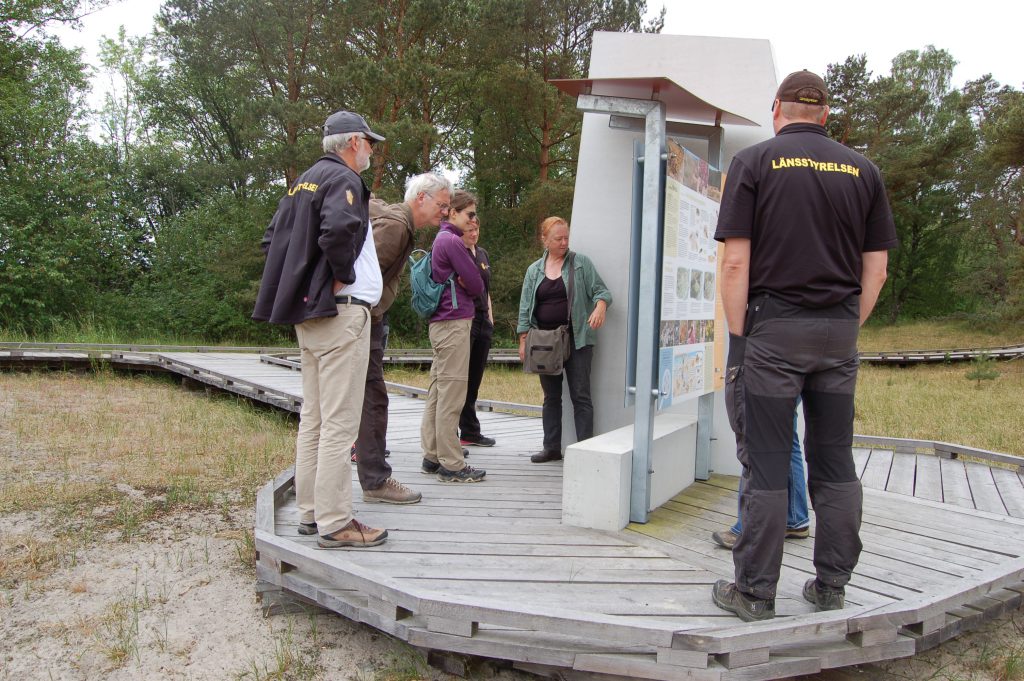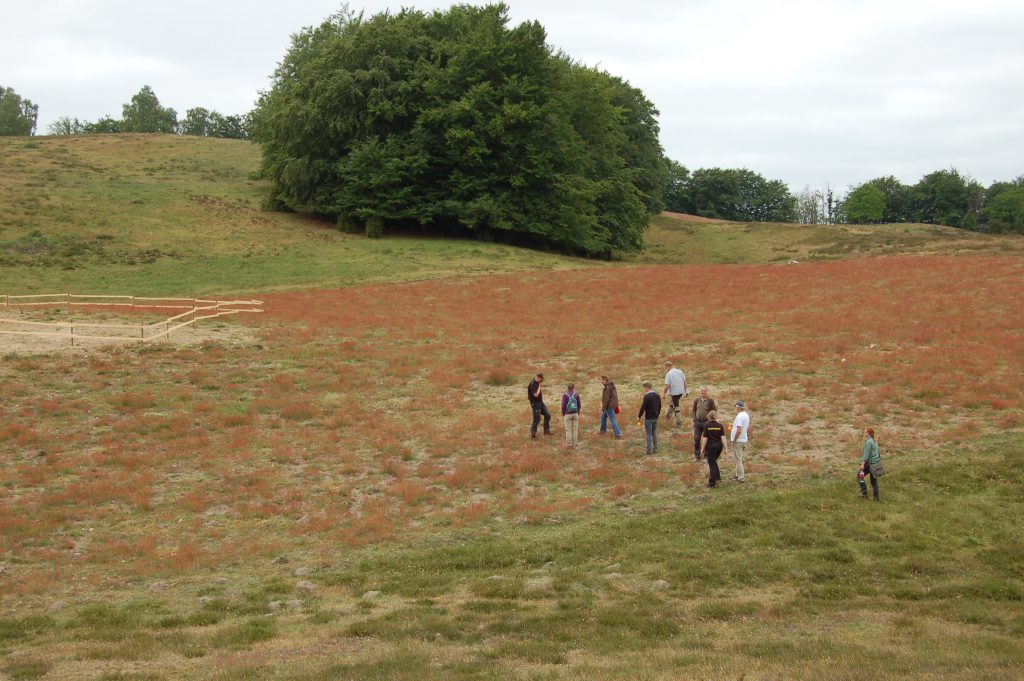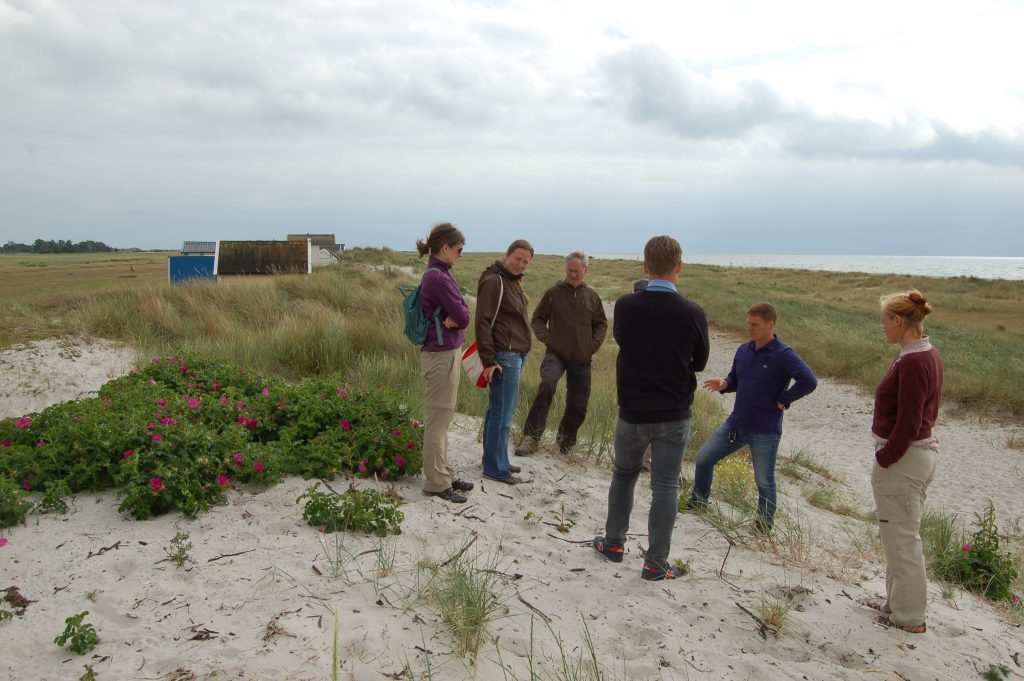For two days in June 2016 Sand Life was visited by the technical officer Ana Klenovsek at the European Commission and the external monitor Inga Racinska. The purpose of the visit was to see how the project progress and we took the opportunity to show some of the major restorations to the visitors. The first stop was at the pre-restored Gropahålet where mountain pines have been felled to make way for large clearings with brilliant white sand. Information boards and the outdoor museum at Friseboda with a ramp for disabled visitors. In the hilly landscape at Drakamöllan, the 3 hectares ploughed grasslands were showed, as well as the prescribed burnings of heather and newly created sand patches. At the Falsterbo peninsula in the southwest of the county of Skåne, we visited the sandy reefs outside Falsterbo where 6.3 hectares hvae been cleared from Japanese rose (Rosa rugosa), and where the difficulty of removing an alien and invasive species were discussed. Finally the 20 hectares of cleared overgrowth of birch at Falsterbo firing range was shown, together with one of the project’s newest outdoor museum. During day two, the European Commission’s financial officer Tommy Sejersen and the external auditor Peter Mecko to discuss the project’s financial progress.
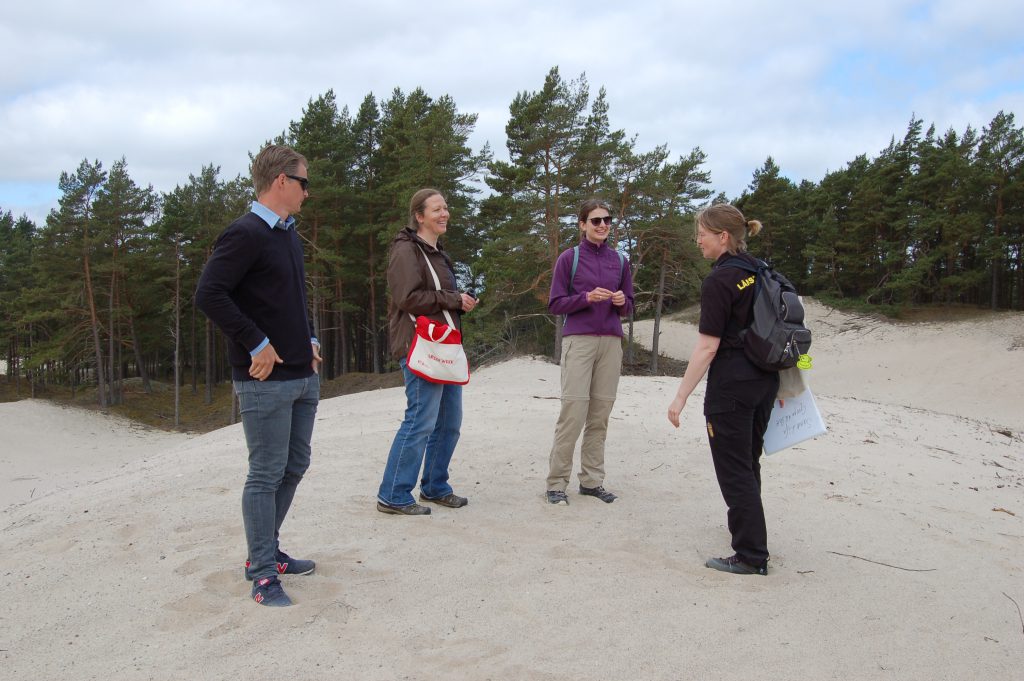
Marit Hedlund shows the sandy gaps in the wooded sand dunes of Gropahålet to the European Commission.
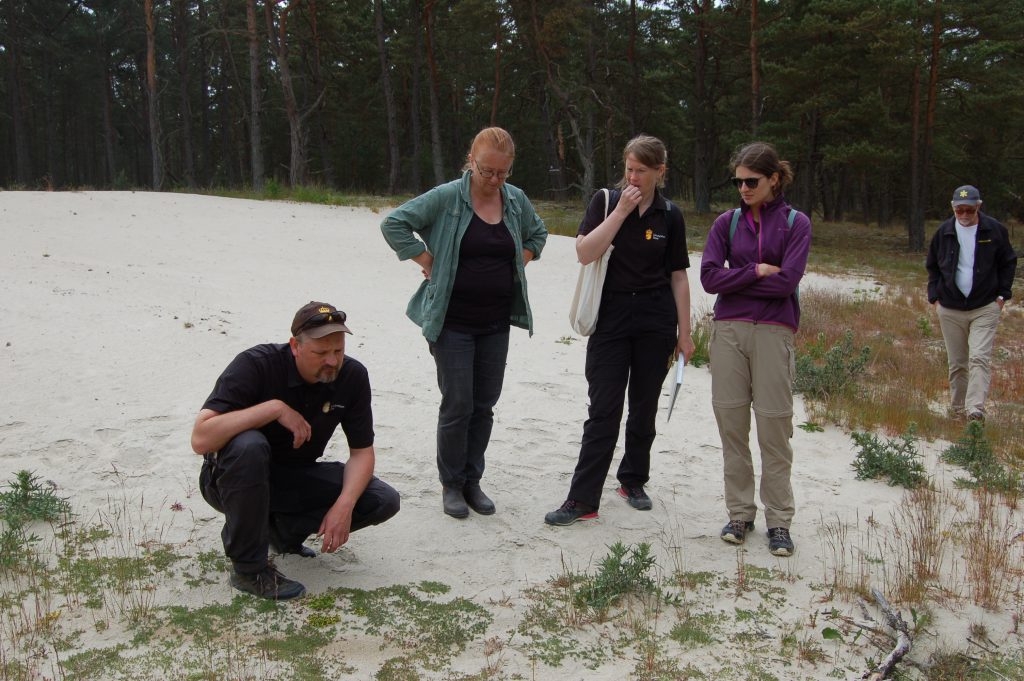
Already during the second growth season, the wild thymes (Thymus serpyllum) has colonized the edges in one of the newly created sand patches at Gropahålet.

